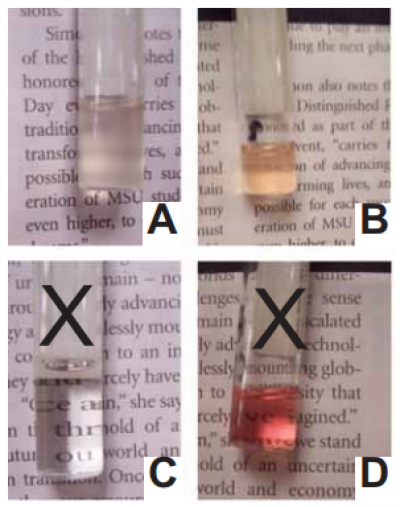Automated immunocytochemical (ICC) labeling for detection of CD3 (T cell) and CD79a (B cell) antigens on canine lymphoma cells is offered at the MSU VDL. Currently this procedure is used primarily to help distinguish B from T cell lymphoma/leukemia to determine the appropriate treatment and to predict prognosis. Performing this procedure on cytologic or hematologic specimens provides a rapid, cost effective option to hasten initiation of treatment and provide prognostic information.
NOTE: Samples for ICC labeling (see instructions below) must be accompanied with, or preceded by, routinely prepared cytology smears (with source provided). ICC will not be performed unless a diagnosis of lymphoma was made at the MSU VDL.
Specimen Preparation
- Inject 1 mL of phosphate buffered saline solution (or similar isotonic buffer) into a 3 mL K2EDTA (lavender top) tube.
- Add a protein source (either 2 drops of 22% bovine serum albumin or serum from an animal with a normal total protein) to help stabilize cell membranes. Mix gently.
- Perform a fine needle biopsy/aspirate of the tissue (e.g. enlarged lymph node) of interest and expel the cells into the sample collection tube. Mix gently. For blood samples, centrifuge the blood, collect the buffy coat layer, and expel the buffy coat into the collection tube. Gently mix.
- Assess specimen cellularity. Samples with adequate cell concentration have a hazy appearance, that prevents reading print through the tube (A). Small amounts of blood result in a tan to light pink discoloration that does not interfere with ICC labeling (B). Clear samples that print may be read through (C) or grossly red samples (D) do not permit accurate ICC labeling.

- Poor quality samples (C, clear or D, grossly red fluid) cannot be used. Continue cell collection until a sample with adequate cellularity (A or B) is available for submission.
- Once an adequately cellular sample has been obtained, label the tube (animal identification and collection site) and refrigerate until submission.
- Send ICC sample tube wrapped in plastic to insulate (do NOT freeze sample) with an ice pack in the shipping container. If you are submitting routinely prepared cytology slides at the same time, ship the slides in a rigid plastic container, taking care to protect them from the ice pack.
- Overnight shipping is recommended.
